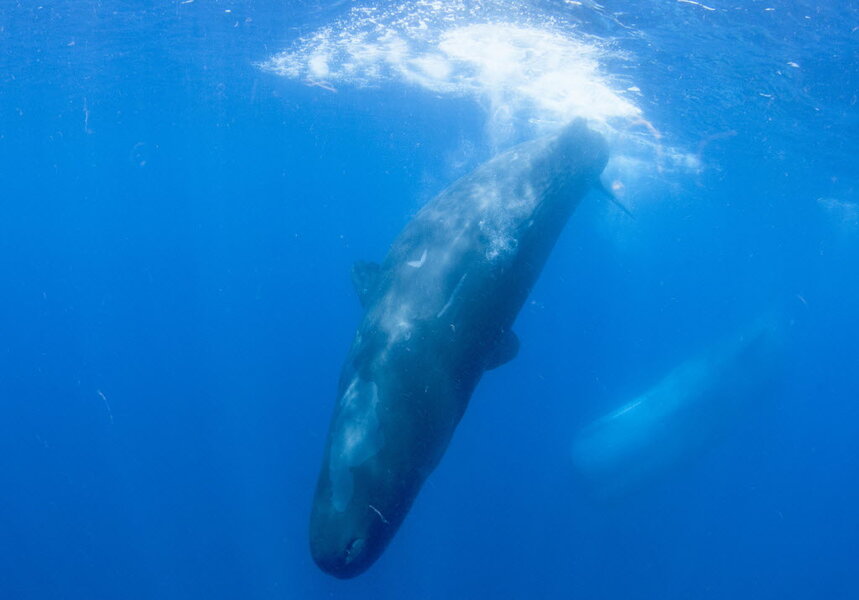Mystery solved: how diving mammals survive underwater
Loading...
When a sperm whale slips beneath the water, plunging down more than 1,000 feet, it won’t be seen anytime soon. The elusive whale, in a feat that has long perplexed scientists, can stay there for more than an hour before it needs to surface again for a breath.
Scientists are now closer to understanding how diving mammals, such as the sperm whale, are able to survive for long periods underwater. Some mammal divers can hold their breath under water for more than an hour, while humans can last just minutes.
A team of scientists at the University of Liverpool has identified a distinctive molecular signature of myoglobin, the oxygen-binding protein that gives meat its red color, in the sperm whale and other diving mammals.
Myoglobin is present in such high concentrations in mammalian divers that their muscles are almost black-colored, rather than red. Since proteins tend to be less effective and clump together at high concentrations, it was not previously understood how such densely packed myoglobin could store enough oxygen to let mammalian divers perform their underwater feats, the envy of every astronaut hopeful.
But according to the latest study, published in Science, the myoglobin in diving mammals has an increased electrical charge, which prevents it from being too sticky and allows it to hold on to a substantial oxygen reserve.
"We studied the electrical charge on the surface of myoglobin and found that it increased in mammals that can dive underwater for long periods of time,” said Dr Michael Berenbrink, of the University of Liverpool's Institute of Integrative Biology, in a press release.“We were surprised when we saw the same molecular signature in whales and seals, but also in semi-aquatic beavers, muskrats and even water shrews.”
The research is not only informative about our modern mammals – the scientists say that it can also tell us about how that diving mechanism evolved.
"By mapping this molecular signature onto the family tree of mammals, we were able to reconstruct the muscle oxygen stores in extinct ancestors of today's diving mammals,” said Berenbrink, in a press release. “We were even able to report the first evidence of a common amphibious ancestor of modern sea cows, hyraxes and elephants that lived in shallow African waters some 65 million years ago.”








